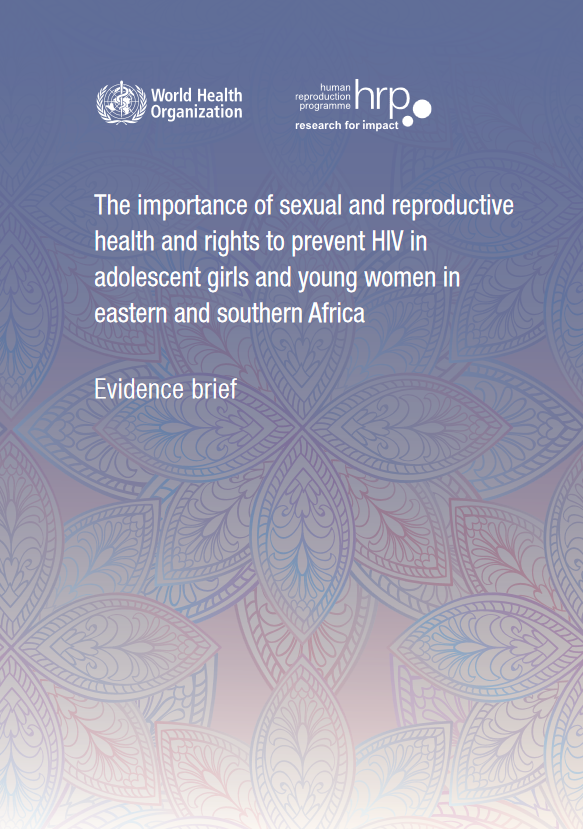Evidence brief on the importance of SRHR for HIV prevention among adolescent girls and young women
Over the last several years, countries in the eastern and southern Africa (ESA) region have made significant and commendable progress in preventing mother-to-child transmission (PMTCT) of HIV and in scaling up HIV treatment efforts. However, despite these gains, there have been no significant reductions in new HIV infections and the region continues to be the hardest hit by the epidemic, highlighting the need to place stronger emphasis on HIV prevention.
The risk of HIV infection among adolescent girls and young women (AGYW) in the ESA region is of particular concern. The 2016 UNAIDS World AIDS Day report, Get on the Fast-Track – The life-cycle approach to HIV, stated that efforts to reduce new HIV infections among young people and adults have stalled, threatening to undermine progress towards ending AIDS as a global public health threat by 2030.
Looking ahead
Most countries have policies for ASRH, and some have implemented successful programmes. Taking small, successful programmes to scale is a critical challenge and there are only a few success stories of scaling up programmes for AGYW for broader or national impact. The discussions at the regional consultation highlighted a range of resources, tools and guidance for programme design, implementation and monitoring that countries can adapt and use. Country teams at the meeting all endorsed an integrated approach, and called for better communication, mapping and partnerships to maximize programme impact.
In the Evidence Brief several next steps were proposed:
- Identify existing coordinating mechanisms or develop new ones to ensure that the diverse actors charged with programme implementation for and with AGYW are working together to maximize programme efficiency and impact. Partnerships at the national level need a lead actor or institution that is accountable for the implementation of policies and programmes for AGYW and for managing collaborative activities with other relevant sectors and partners. Experiences from the Namibia Youth Task Force could inform this process.
- Map programmes, policies, advocacy and other activities across key sectors related to AGYW to facilitate learning and collaboration and avoid duplication. This is especially important as programmes seek to break out of existing silos where they may be more familiar with the key actors and initiatives.
- Explore and develop a few case studies of specific programme experience or coordination processes and mechanisms to illustrate possible best practices and address outstanding questions. Examples would be identified in collaboration with countries. This includes, in particular, creating spaces for dialogue between different stakeholders at the national level to find innovative solutions.
- Advocate with donors and other key players to ensure that priority-setting processes and mechanisms include expertise in SRHR and AGYW, as well as diverse community voices, in sufficient numbers to influence their deliberations and decisions. Work with CCMs and PEPFAR colleagues to identify experts who can serve on drafting teams, and determine which funding mechanisms available for AGYW programmes best match different types of programming initiatives.
- Monitor, evaluate and document the scale-up of integrated HIV-prevention and SRHR interventions for AGYW in the context of different initiatives, including identifying optimal approaches to scaling up the delivery of successful interventions. This includes putting in place mechanisms to ensure that interventions can adapt to lessons learnt from implementation of policies and programmes.
- Work with the conveners and sponsors of key upcoming meetings to ensure that the messages, outcomes and priorities inform their planning and deliberations.
